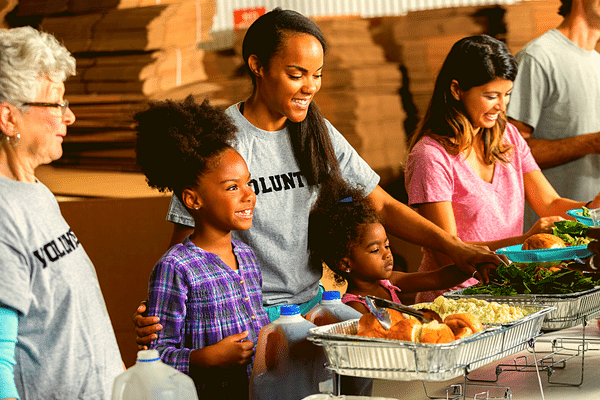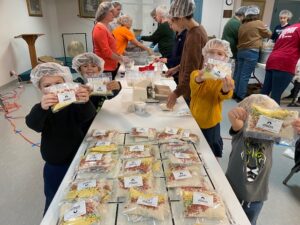5 Benefits of Serving Others as a Family

This Saturday, November 19, is a special day I’ll bet you didn’t know about—Family Volunteer Day. The Points of Light Foundation (inspired by President George H.W. Bush) promotes the third Saturday in November each year as Family Volunteer Day as a way of motivating families to serve together.
I have known for some time the values of families serving others together but learning that a day in the year is set aside to facilitate just that got me thinking about it more. I ask you to join me in reflecting on this not-so-novel idea. There is no debate about families serving together being a good thing, but what, in fact are the benefits? I offer five.
- I’ll start with the most obvious—When families serve others together, it teaches children the value of serving. Where and when do children learn the value of serving others? Maybe at school. Maybe at church. (I wish I could be more confident of this, but my experience tells me this is iffy.) If they participate in community organizations for children, maybe there.
The best context in which children can learn anything is home or family. Most parents know what values they want their children to learn. Is serving others one of them? If not, why not? If so, you must make time for it . . . just like youth sports, music lessons, Boy and Girl Scouts, and so forth. Our children learn what we believe is important by what we put into their schedules.
- The next most obvious benefit—When families serve others together, it is quality time as a family. How many times have you heard parents excuse their lack of time with their children by insisting they have quality time with them? Yeah, I have my doubts about that, too.
Quality time is not just being in the house at the same time; it’s having conversations with each other. Quality time is not just eating a meal together (although many families could make that a goal); it’s sharing experiences together and talking about them. Serving others together is guaranteed to create opportunities to do this.
- When families serve others together, it helps children cultivate compassion. While our culture values compassion, it doesn’t do much to teach it. In fact, some of the prevailing values of the culture run counter to compassion—independence, self-reliance, self-promotion, getting ahead, and so forth. Children have just as much capacity for compassion as adults (maybe more as they are not yet hardened by distrust and criticism of human needs), but they need guidance for their feelings for others’ needs to be directed in healthy ways.
- When families serve others together, it teaches the entire family how to find and understand needs. As part of the planning to get your family engaged in serving others, it is wise to spend a little time learning about the need to which you feel drawn. So, do a little research. Learn what you can about the need: why it exists, how many people suffer from that need in your community and where they are, and community organizations that attempt to meet that need. This is a teaching point for the entire family. Adults no less than children require understanding in order to be effective in serving people in need.
- When families serve others together, it redefines “fun.” Invariably, when children are engaged in serving others, they say it’s “fun.” And they realize it’s a different kind of fun than they often experience. Two days ago, I led a food packing event in which individuals and families of a church came together to pack 15,000 meals that will be distributed to the food insecure of their community. A young mother brought her three young children who served alongside her. I watched as they patted down the plastic bags of food and placed stickers on them and spread them out on a chart designed to help everyone keep an accurate count of our work. The children had a blast! As children often do, they made a game of their work, seeing how quickly they could tell me they were ready for me to do my part. And, of course, I “egged” them on.

Notice: no electronics were involved, no balls of any kind, not really any competition, just plain fun while doing good. In my interaction with these children, I told them the food was going to people in their town who didn’t have enough to eat. Maybe they won’t remember that, but maybe they will. Maybe they will ask their mother why people don’t have enough to eat. And the next time they have the chance to help pack food, you’d better believe these kids will be all over it!
One family serving others
The Ryan family has been serving others together for years. It began with husband and wife as newlyweds preparing and serving meals for homeless people in their community. Shawn, the father, said, “as children started coming, we just kept going. Our children have grown up serving.” These children expect to serve because it’s part of their family’s DNA.
Here’s the thing: the children bring a joy and innocence to the Ryans’ serving Mom and Dad can’t do on their own. Says one of the staff at the shelter where the Ryans serve: “With the kids being so present and active, there’s a level of trust that gets built for the whole team. It breaks down some of the walls people have. Sometimes people are very hardened by their way of life. The kids melt that away.”
Let me hear from you
Does your family or some of your extended family serve others together? What do they do? What has been their experience?



Leave a Reply